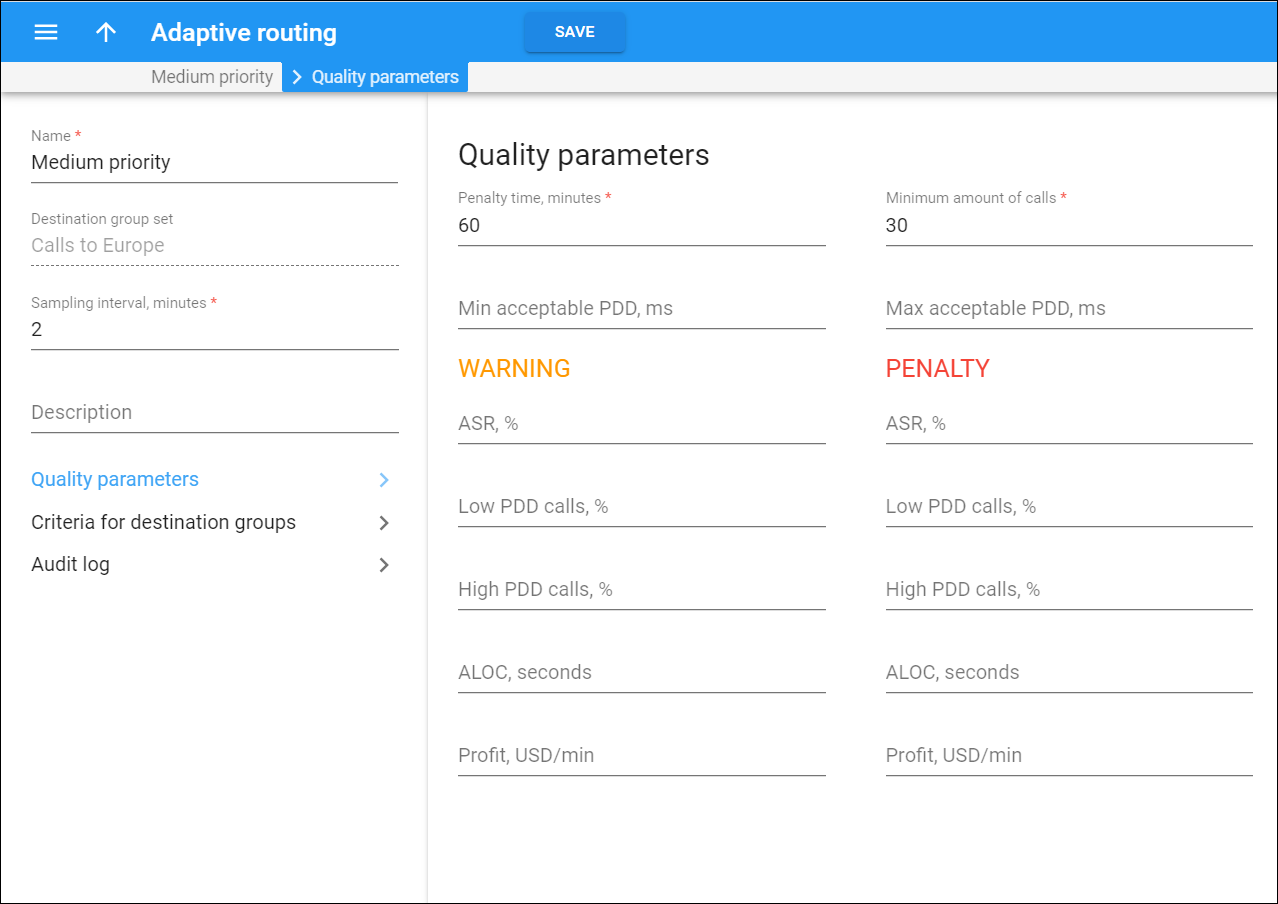On this panel you can specify the quality requirements in the form of threshold parameters. PortaBilling will use these parameters when analyzing the quality of calls that pass via a specific vendor connection.
Penalty time, minutes
The time interval for which a connection will be "penalized" (put at the very bottom of the routing list) if a given vendor does not meet the quality criteria. This field is obligatory.
Minimum amount of calls
The minimum calls required to pass via a given connection within the sampling interval that is considered to be statistically representative. If the number of calls is below the specified value, the quality parameters won't be matched against the threshold, and no routing adjustments will be made. This field is obligatory.
Min acceptable PDD, ms
Defines the minimum acceptable PDD (Post Dial Delay). A PDD is the time interval between the moment a connection request is sent to the vendor and the moment ring-back is received. A PDD lower than the defined value is suspicious, and in this case the vendor is probably doing "false ringing" to hide the long time it actually takes him to route the call.
Max acceptable PDD, ms
Defines the maximum acceptable PDD (Post Dial Delay). Too high of a PDD has a strong negative impact on your business, since during the delay time the end user hears only silence, and generally assumes that there is a problem with the service.
Warning & Penalty thresholds
The following metrics have two values: the Warning and Penalty thresholds. The Warning threshold specifies when an alert will be sent to the administrator (but no changes in the routing will be done). The Penalty threshold defines when the route should be penalized if the quality statistics are outside the threshold value.
For effective quality measurement, the following key control parameters are used:
-
ASR, % – the ASR (Average Success Rate) is the number of successfully connected calls divided by the total number of call attempts. The ASR value cannot exceed 100%.
-
Low PDD calls, % – this is the maximum acceptable percentage of calls with a PDD below the specified value.
-
High PDD calls, % – this is the maximum acceptable percentage of calls with a PDD above the specified value.
-
ALOC, seconds – the ALOC (Average Length of Call) parameter indicates the call duration that is considered to be normal (for example, 2 minutes). When this parameter drops below the specified threshold this can indicate some issues on the vendor side. ALOC is calculated as the arithmetic average duration of all successfully answered calls. To calculate ALOC, the system fetches all successfully answered calls regardless of the reason for the disconnection of these calls.
-
Profit, USD/min – profit per minute (expressed in the monetary units of your base currency) is the aggregated profit that shows the difference between the actual charged amounts in your customers' and vendors' xDRs. When this parameter drops below the specified threshold, the "unsuccessful" vendors are moved to the very bottom of the routing list. This ensures that the system will first try to terminate the call via other carriers (with good call quality). However, if they all fail or become unavailable, the "penalized" carrier will have a chance to terminate the call.



